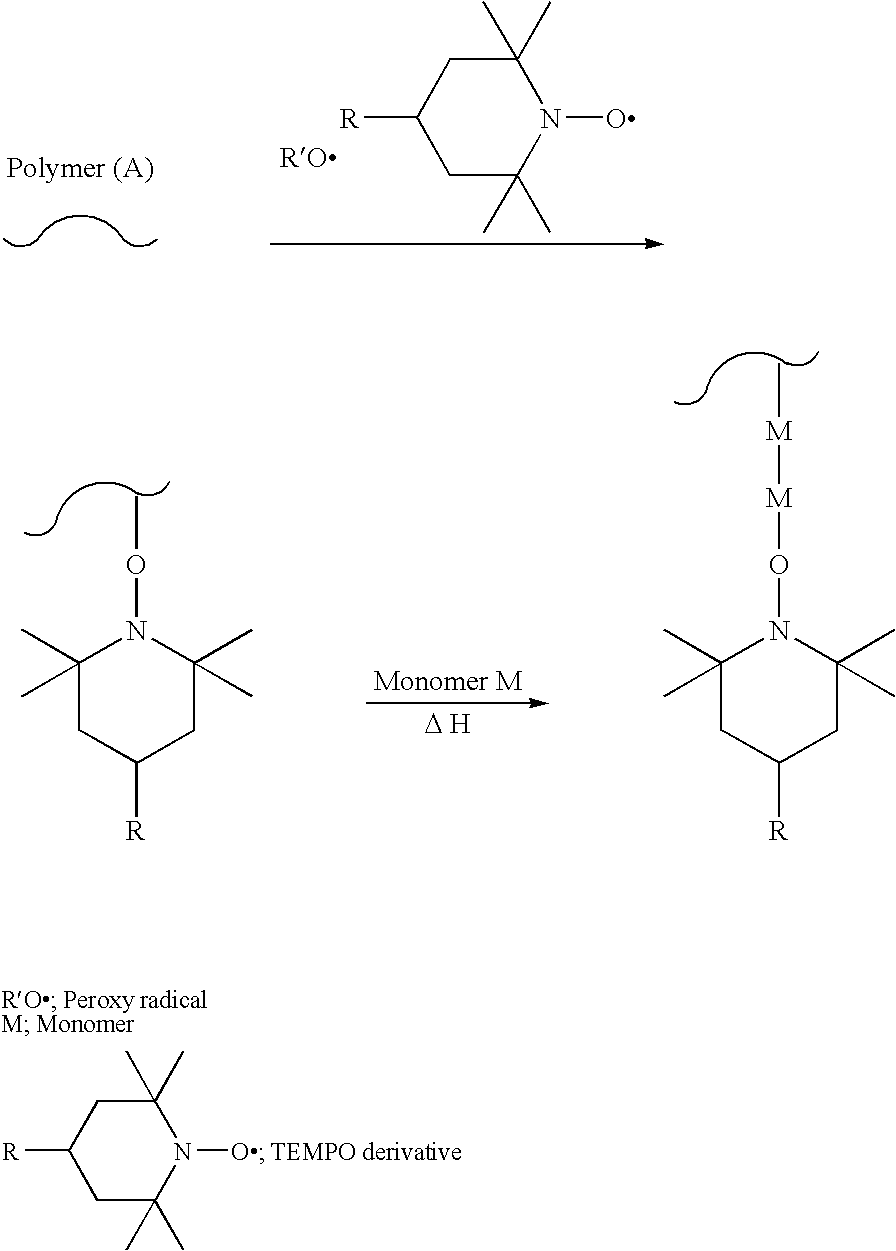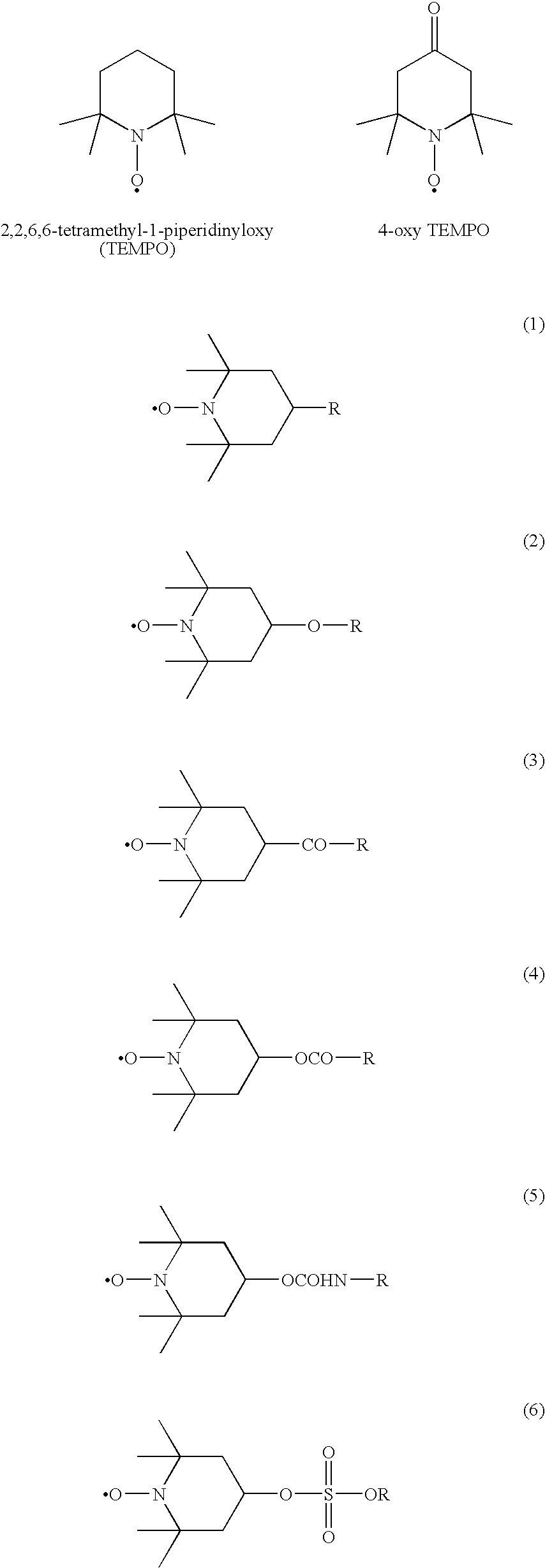Modification method of polymer
a technology of polymer and polarity, applied in the field of modifying a polymer, can solve the problems of low compatibility with a polyamide, polyester or other resin, low bondability of a polyamide to glass etc., and achieve the effect of enhancing the polarity of a polymer
- Summary
- Abstract
- Description
- Claims
- Application Information
AI Technical Summary
Benefits of technology
Problems solved by technology
Method used
Image
Examples
examples
[0021] Examples will now be used to further explain the present invention, but the scope of the present invention is by no means limited to these Examples.
example 1
Production of Modified IIR (1)
[0030] OHT-IIR in an amount of 350.0 g and glycidyl methacrylate in an amount of 26.5 g were mixed in an internal Banbury mixer set at a temperature of 100° C., while substituting with nitrogen for 5 minutes. While mixing, the temperature was raised to 185° C. and the mixture mixed for 15 minutes. Part of the polymer obtained was dissolved in toluene and reprecipitated to isolate and purify a polymer. Purified products were used for analysis by IR and analysis by 1H-NMR. The introduction rate of the glycidyl methacrylate-derived epoxy group (mol %) was found by the integrated ratio of the 1H-NMR signal. The results are shown in Table I.
example 2
Production of Modified IIR (2)
[0031] OHT-IIR in an amount of 350.0 g and styrene in an amount of 19.4 g were mixed in an internal Banbury mixer set at a temperature of 100° C., while substituting with nitrogen for 5 minutes. While mixing, the temperature was raised to 185° C. and the mixture was mixed for 15 minutes. Part of the polymer obtained was dissolved in toluene and reprecipitated to isolate and purify a polymer. Purified products were used for analysis by 1H-NMR. The introduction rate of the styrene-derived phenyl group (mol %) was found by the integrated ratio of the 1H-NMR signal. The results are shown in Table I.
PUM
 Login to View More
Login to View More Abstract
Description
Claims
Application Information
 Login to View More
Login to View More - R&D
- Intellectual Property
- Life Sciences
- Materials
- Tech Scout
- Unparalleled Data Quality
- Higher Quality Content
- 60% Fewer Hallucinations
Browse by: Latest US Patents, China's latest patents, Technical Efficacy Thesaurus, Application Domain, Technology Topic, Popular Technical Reports.
© 2025 PatSnap. All rights reserved.Legal|Privacy policy|Modern Slavery Act Transparency Statement|Sitemap|About US| Contact US: help@patsnap.com



